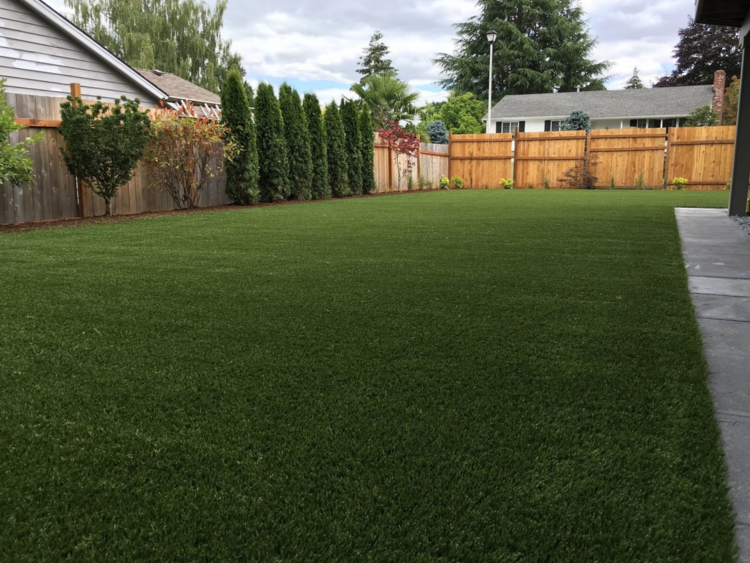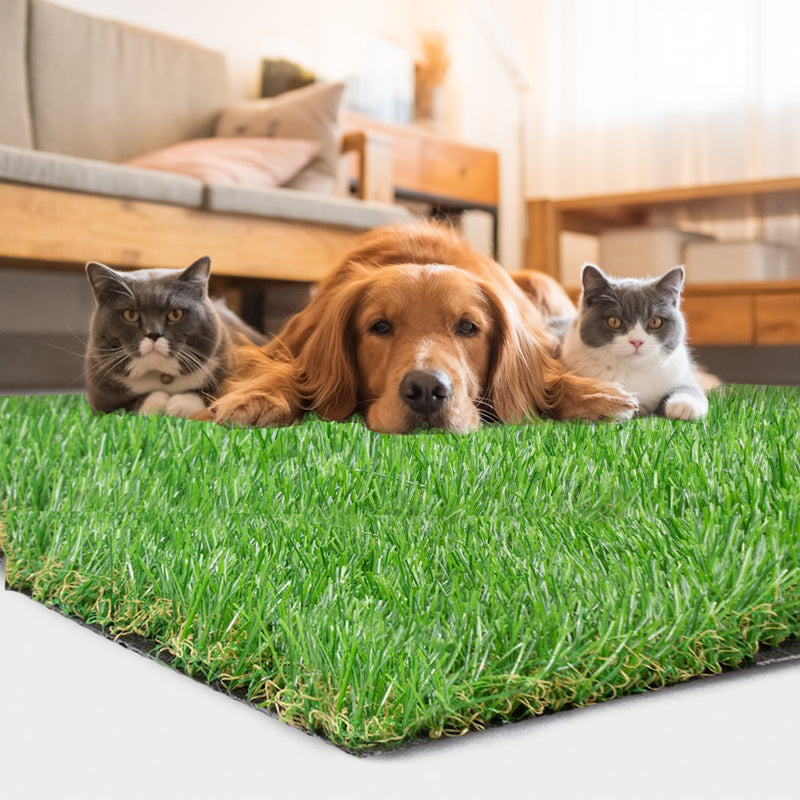Find Trusted Artificial Turf Companies Phoenix for Long-Lasting and Natural-Looking Grass
Look Into the Environmental Conveniences of Opting for Synthetic Grass Solutions
The adoption of fabricated grass options offers an engaging opportunity to attend to pushing ecological difficulties. By dramatically decreasing water use and reducing the application of hazardous chemicals, these alternatives not only promote lasting landscape design yet also secure regional environments.
Water Preservation Perks
Among one of the most substantial advantages of synthetic grass is its capability to save water. Typical yard yards call for significant irrigation, specifically in locations susceptible to drought or water constraints. On the other hand, synthetic grass does not require watering, significantly reducing the general need for water sources. This feature is specifically helpful in deserts where water scarcity is a pushing concern.
By eliminating the demand for routine watering, synthetic grass adds to lasting landscape practices and assists reduce the environmental influence of extreme water intake. In addition, the preservation of water encompasses the decrease of drainage, which can cause soil disintegration and waterway pollution.
Additionally, the setup of synthetic grass permits municipalities and home owners to allot water sources much more successfully, focusing on crucial uses such as drinking water and farming. The shift towards fabricated grass not just advertises liable water usage but likewise lines up with broader ecological goals focused on protecting all-natural sources.
As neighborhoods progressively prioritize sustainability, the water conservation benefits of synthetic grass provide a compelling case for its adoption in industrial and property landscaping jobs.
Lowered Chemical Usage
The transition to synthetic grass dramatically lowers the dependence on chemical therapies frequently made use of in natural turf maintenance. Traditional turf monitoring typically involves the application of chemicals, herbicides, and fertilizers to advertise growth and control bugs. These chemicals can present dangers to human health, neighborhood wild animals, and the atmosphere, contributing to dirt and water contamination.
In comparison, synthetic grass eliminates the demand for these unsafe compounds. Once mounted, it needs minimal maintenance, primarily containing routine cleaning and infrequent infill replenishment. This decrease in chemical use not just benefits the prompt atmosphere yet additionally adds to broader eco-friendly stability. By decreasing the launch of synthetic substances into the ecological community, man-made grass advertises healthier dirt and water systems.
In addition, the absence of chemical drainage connected with artificial lawn installations assists shield local rivers from air pollution, supporting marine life and maintaining biodiversity. Artificial turf companies phoenix. As neighborhoods increasingly focus on lasting techniques, selecting synthetic grass presents a practical option that aligns with ecological preservation objectives. Through this shift, homeowner can enjoy lush green areas without jeopardizing eco-friendly wellness, leading the way for a much more lasting future
Reduced Carbon Footprint

Furthermore, the setup of man-made turf can lead to significant water preservation. Natural grass require significant amounts of water for watering, which not just adds to the carbon footprint connected with water removal and therapy yet additionally strains local water resources. In contrast, fabricated lawn requires very little upkeep, calling for no watering, therefore dramatically decreasing water use and its associated energy prices.
Additionally, the durability of synthetic grass adds to its reduced carbon impact. With a life expectancy of up to 15 years or more, the need for frequent replacements is diminished, resulting in much less waste and reduced power usage in production and disposing of traditional grass choices. In general, synthetic grass presents a lasting alternative for eco aware landscaping.
Habitat Preservation
Environment preservation is a vital consideration in the discussion over landscaping choices, specifically when contrasting synthetic grass to all-natural turf. All-natural lawn lawns often need considerable upkeep, including using fertilizers, herbicides, and chemicals, which can negatively impact local communities. These chemicals can leach right into the soil and rivers, harming native vegetation and fauna and interfering with local environments.
Man-made lawn eliminates the need for damaging chemicals, consequently safeguarding neighboring wild animals and keeping the honesty of bordering ecological communities. The setup of man-made grass can lead to the conversion of former turf areas right into even more biodiverse landscapes, such as pollinator yards or indigenous plant locations, which can support neighborhood wild animals.
Inevitably, the change to synthetic grass not just saves water and lowers upkeep Website initiatives however also promotes a more unified relationship in between human tasks and the native environment, advertising environment preservation at the same time.
Long-Term Sustainability
Lasting sustainability is a crucial factor in reviewing the benefits of synthetic grass over traditional yard lawns. One of one of the most considerable benefits of artificial lawn is its longevity; it can last up to 15-20 years with very little maintenance, whereas all-natural turf calls for constant reseeding and replacement. This long life minimizes the need for continuous resources, such as water, plant foods, and pesticides, which are important for maintaining a healthy and balanced yard lawn.
Additionally, synthetic grass contributes to a decrease in carbon emissions related to yard treatment tools. Typical yards usually require gas-powered lawn mowers, trimmers, and blowers, all of which add to air pollution. Phoenix turf companies. In contrast, synthetic grass removes the need for such equipment, advertising a cleaner environment
Additionally, the production of man-made grass increasingly makes use of recycled products, enhancing its sustainability account. As suppliers take on green methods, the ecological footprint of synthetic grass proceeds to diminish.

Conclusion
The fostering of man-made turf remedies provides significant ecological advantages, consisting of substantial water preservation, decreased dependence on dangerous chemicals, and a lower carbon impact. Man-made turf aids in maintaining visit this web-site natural habitats by minimizing land disruption and advertising long-term sustainability with the use of sturdy materials. Jointly, these variables underscore the capacity of synthetic grass to add positively to environmental wellness and offer a sensible alternative to standard landscape design techniques in a progressively resource-conscious globe.
In contrast, man-made lawn does not require watering, considerably minimizing the total demand for water resources. By lessening the launch of artificial substances into the environment, fabricated lawn promotes healthier soil and water systems.
Additionally, the installation of artificial lawn can result in read this article significant water preservation. In comparison, fabricated lawn needs minimal maintenance, requiring no watering, thus substantially decreasing water use and its linked power prices.
